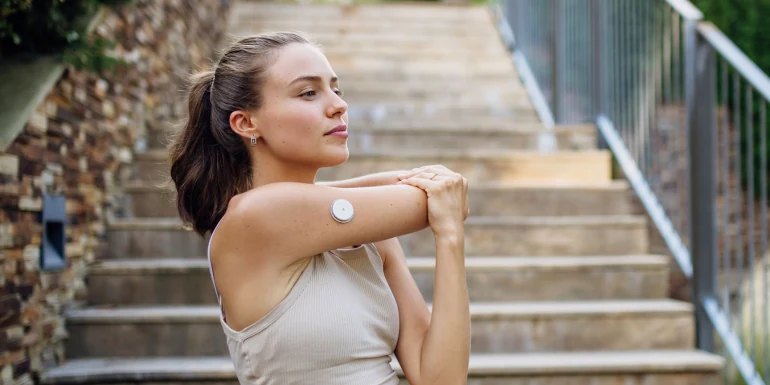
Type 1 diabetes: a diagnosis with consequences
Being diagnosed with type 1 diabetes is a watershed moment in anyone's life. You will need to adjust to being dependent on daily injections of insulin. You will inevitably have to accept some lifestyle restrictions. For example, what you eat has a direct impact on your blood glucose, so you will need to adjust your insulin dosage accordingly. Type 1 diabetes does need to be taken seriously, but it will not stop you living your own life.
A diagnosis of type 1 diabetes is difficult to accept, whether it affects you or your child. However, the diagnosis is no reason to lose your optimism and joy in life. Around 24,000 people in Switzerland have been diagnosed with type 1 diabetes.
We recommend that you talk about it with family members or other people you trust. Exchanging information with diabetics in person or through blogs or forums can also help you come to terms with your new circumstances.
What should I do if I have type 1 diabetes?
At present, this form of diabetes due to an insulin deficiency cannot be healed, but it can be effectively treated by administering insulin. The diagnosis of type 1 diabetes means that the diabetic must inject insulin throughout his or her life. These insulin injections in combination with a controlled consumption of carbohydrates are the optimum way to manage your blood glucose level. This is vital, because it prevents metabolic crises such as hypoglycaemic or hyperglycaemic attacks.
Managing your blood glucose level can also prevent or delay diabetic complications such as eye diseases, nerve damage, kidney disorders or arteriosclerosis. Type 1 diabetics should be aware that in some circumstances their wounds will not heal properly, they may not feel pressure points and their sense of touch may be impaired.
Treatments for type 1 diabetes
The diagnosis of type 1 diabetes means that your blood glucose level has to be measured regularly, i.e. three to six times a day. Insulin therapy will become a constant part of your life. Reliable and handy test devices with test strips are available for measuring blood glucose levels. Insulin is administered, for example, with the help of disposable or reusable pens, practical injection aids in the shape of a ballpoint pen. Alternatively, an insulin pump can be used, which is connected to the subcutaneous tissue of the abdomen through a narrow tube. Ask your GP for advice.
Balancing insulin administration and diet
Being diagnosed with type 1 diabetes means that you will have to adapt your eating habits. The aim will be to adjust them to your insulin therapy so that your blood glucose level does not dip too low or rise too high. For example, the body needs more insulin after a meal to ensure the blood glucose level doesn't rise too high. Your medical professional will advise you on drawing up a diet plan that is geared to your individual requirements or those of your child.
With time and experience, diabetics become experts in balancing their insulin administration and diet.
Exercise: beware of hypoglycaemia
Physical activity has no therapeutic effect on type 1 diabetes. However, a healthy amount of exercise promotes physical and mental well-being in type 1 diabetics. This also applies to children with diabetes. It does them good to get exercise outdoors, race against others, cycle or play ball. However, if you are a diabetic and enjoy exercise, you will need to adjust your insulin administration and, if necessary, also your diet. The biggest danger associated with intensive physical activity is hypoglycaemia.
There are no hard-and-fast rules for avoiding harmful swings in your blood glucose level during physical activity. Consult your medical professional and include his/her recommendations in your treatment plan.
Further information
Mail-order pharmacies


Newsletter
Find out more about current health issues every month and get all the information you need about our attractive offers from all Helsana Group companies * delivered by e-mail to read whenever it suits you. Our newsletter is free of charge and you can sign up here:
We did not receive your information. Please try again later.
* The Helsana Group comprises Helsana Insurance Company Ltd, Helsana Supplementary Insurances Ltd and Helsana Accidents Ltd.